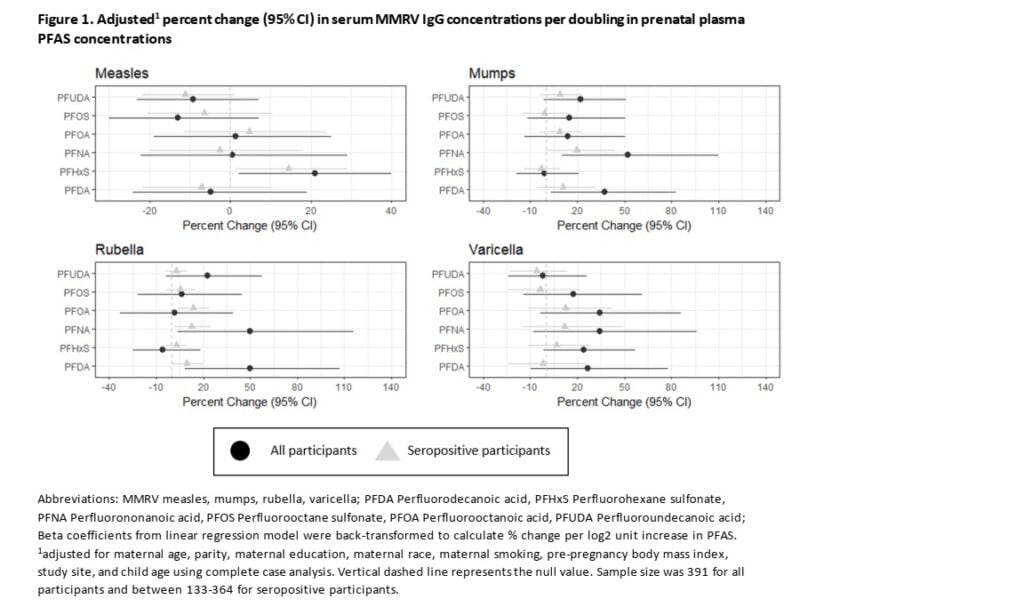Environment/Climate Change
Perfluoroalkyl substances and childhood immunity to measles, mumps, rubella and varicella Jillian Ashley-Martin* Jillian Ashley-Martin Elizabeth McLachlan Clarissa Klenke Alberto Severini Susan MacPherson Yashika Handa Mandy Fisher Michael Borghese Robin Shutt Kavita Singh Joseph Braun Isabelle Boucoiran Michael Luster Victor Johnson Tye E Arbuckle Janice Hu
Perfluoroalkyl substances (PFAS), a class of persistent chemicals used in consumer products for their heat, water and stain repellant properties, have been associated with reduced responses to child vaccines. Existing studies have not focused on immunity to measles, mumps, rubella or varicella (MMRV) in young children. Our objective was to quantify associations between prenatal PFAS concentrations and levels of MMRV antibodies in preschool aged children.
Our study population was 402 singleton children enrolled in the Canadian Maternal-Infant Research on Environmental Chemicals study with complete PFAS and MMRV data. We measured second trimester plasma concentrations of 6 PFAS and serum concentrations of total MMRV IgG antibodies in MIREC children age 2-5. Using multivariable linear regression models adjusted for key covariates, we quantified the percent change in IgG levels for each doubling of prenatal PFAS concentrations. To account for vaccination status, we conducted a sensitivity analysis restricted to participants classified as seropositive.
The majority of children were seropositive to measles (94%), mumps (88%), and rubella (96%); fewer (35%) were seropositive to varicella. Median PFAS concentrations ranged from 0.15 to 4.3 µg/L. Perfluorodecanoic acid, perfluorononanoic acid and perfluorohexane sulfonate were associated with up to 50% higher rubella, mumps and measles IgG concentrations; these estimates were attenuated or null in seropositive models (Figure 1). Perfluorooctanoic acid was positively associated with higher rubella IgG concentrations in seropositive models (13% (95% CI: 2.8,23)) but not in the main analyses (11%, 95: CI: -33,39).
Prenatal PFAS were not associated with reduced child MMRV immunity in this population. Restriction to seropositive participants may mitigate some potential bias related to lack of vaccination history data. Future MIREC research will investigate lactational and concurrent childhood PFAS exposure in relation to MMRV.

